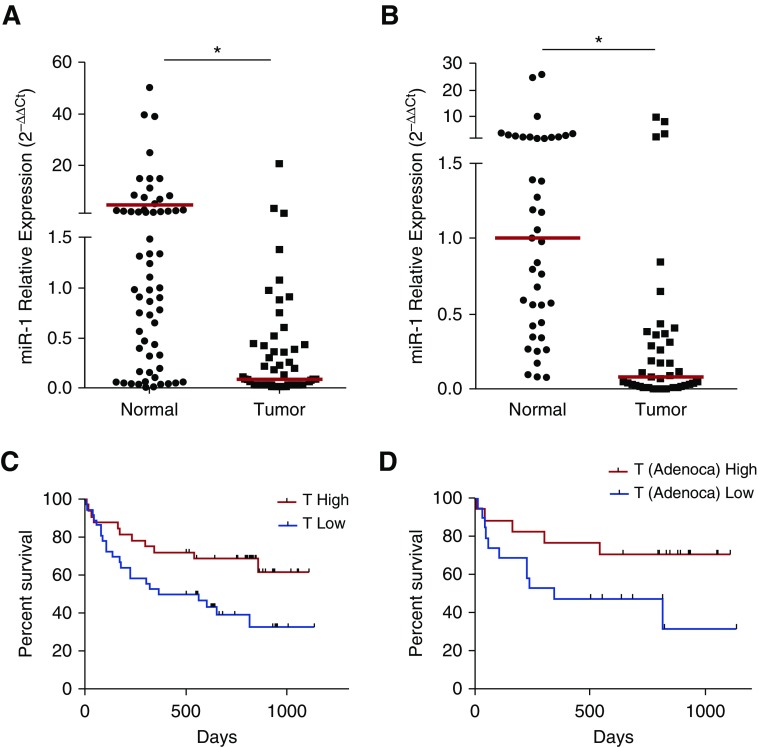Figure 1.
The clinical significance of microRNA-1 (miR-1) levels in non–small cell lung cancer. (A) Mature miR-1/18s (control gene) levels were measured in tumors and cancer-free lung tissue samples from the all–non–small cell lung cancer cohort. Values were normalized to the median of the normal samples and expressed as 2−∆∆Ct (nTumor = 61, nNormal = 57; *P = 0.0033). (B) miR-1 values in samples from the early lung adenocarcinoma cohort were measured and graphed as in A (nTumor = 41, nNormal = 41; *P < 0.0001). In A and B, red bars show medians in each group. (C) Patients were divided into T-high and T-low groups based on the median of all tumor miR-1 levels in the cohort. Kaplan-Meier graph shows survival (in days) for T-high and T-low patients (n = 61; P = 0.0082). (D) Patients with lung adenocarcinoma (Adenoca) were divided into T-high and T-low groups and their survival compared as described in C (n = 36; P = 0.0189). In C and D, gray tick marks indicate censored patients.

